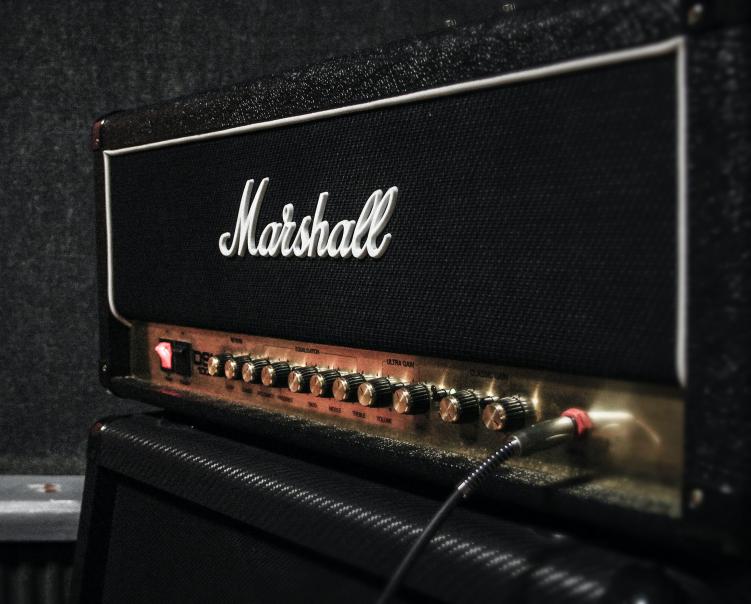When people talk about an amplifier they are usually referring to musical equipment or stereo components. However, this is only a very small representation of the type of audio amplifiers available.
Amplifiers are everywhere. You’ll find them in everyday items including computers, televisions, and portable CD players. You’ll even see amps in all types of live music.
If you’re wondering how an amplifier works, then this guide has all the answers you need.
What Is An Amplifier?
An amplifier (or an “amp”) is an electronic or electromagnetic component that boosts an electric current.
Amplifiers have many uses. They are found in stereo equipment to drive your loudspeakers and are also large boxes you plug into electric guitars and electronic drum kits to increase the volume of the sound output. You should visit the site to find the most suitable amp to match your needs.
Although amplifiers can seem quite mysterious and difficult to operate at times, the principles of operation remain quite straightforward.
Any amplifier will work in the same way. In a stereo amplifier, the amp itself will receive an input signal from a select source (such as a turntable or a mobile device) and enlarge it. The power needed to achieve this is usually taken from a 110-volt wall socket.
Amplifiers typically require three connections including a source of power from the 110-volt wall socket, an input from the source, and output to the speakers.
How Does An Amplifier Work?
Amplifiers used in audio equipment tend to take small electrical signals and amplitudes, and will then proceed to increase their power and strength. Put simply, an amplifier works by turning small electric currents into bigger ones.
If you would like to boost an already constant electric voltage then you can use a piece of equipment called a transformer. This is an electromagnetic device that features in many household appliances including MP3 players, laptops, and other devices that are usually from a higher-voltage power outlet.
Transformers can also be used to convert large voltages into small voltages. However, they can also be used to convert smaller ones into larger voltages – depending on the necessity.
If an input current is only a beat of electricity (like switching an appliance on and off) then you could potentially utilize an electromagnetic relay to amplify it. This couples two electric circuits together so that when a larger current flows through one, a small current flows through the other.
By utilizing a relay, even the smallest electric current will be able to power anything that typically requires a larger current to work.
In a stereo amplifier, the electrical current from the wall socket will be sent to a transistor from the power supply. For example, a 200 Hz tone taken from the input source will cause the transistor to open and close 200 times per second. As a result, the transistor can control the amplitude and frequency of the electrical current that is being sent to the speaker (it operates much like a valve would.)
Common Issues To Watch Out For
Distortion
Amplifiers don’t just boost an electric current. They also work to reproduce the quality of the input signal even when it varies in terms of amplitude and frequency.
Amplifiers also have to work across various sound volumes which can lead to another vital problem. As the rate of input amplitude increases, the amplifier will begin to struggle with creating a corresponding increase in its output. This is down to the fact that there is a limit to how much power can be made.
Any further input increases will create the same level of output (known as clipping) while increasing the amount of distortion.
Feedback
Feedback is another common issue associated with working amplifiers. It is synonymous with being a deafening whistle sound and can occur quite frequently.
Feedback is pretty common with people who use microphones on stage: if it is turned up too loud, or placed near a speaker, it’ll pick up the voice or instrument, and will also pick up the amplified sounds coming from the speaker slightly after.
There is a limit to how much an amplifier will boost a signal without distorting or clipping the sound. To reduce this, you can connect multiple amplifiers so that the output from one amplifier feeds into the input of the next one, and so on. This will continue until you get a large boost. These are called multistage amplifiers.
Summary
Amplifiers aren’t just designed to single-handedly boost the signal. Because there are so many varieties of amplifiers available, the common components found in their electronic circuits can be used in anything from basic computing operations to the more complex process of signal filtering and oscillation.


When people talk about an amplifier they are usually referring to musical equipment or stereo components. However, this is only a very small representation of the type of audio amplifiers available.
Amplifiers are everywhere. You’ll find them in everyday items including computers, televisions, and portable CD players. You’ll even see amps in all types of live music.
If you’re wondering how an amplifier works, then this guide has all the answers you need.
What Is An Amplifier?
An amplifier (or an “amp”) is an electronic or electromagnetic component that boosts an electric current.
Amplifiers have many uses. They are found in stereo equipment to drive your loudspeakers and are also large boxes you plug into electric guitars and electronic drum kits to increase the volume of the sound output. You should visit the site to find the most suitable amp to match your needs.
Although amplifiers can seem quite mysterious and difficult to operate at times, the principles of operation remain quite straightforward.
Any amplifier will work in the same way. In a stereo amplifier, the amp itself will receive an input signal from a select source (such as a turntable or a mobile device) and enlarge it. The power needed to achieve this is usually taken from a 110-volt wall socket.
Amplifiers typically require three connections including a source of power from the 110-volt wall socket, an input from the source, and output to the speakers.
How Does An Amplifier Work?
Amplifiers used in audio equipment tend to take small electrical signals and amplitudes, and will then proceed to increase their power and strength. Put simply, an amplifier works by turning small electric currents into bigger ones.
If you would like to boost an already constant electric voltage then you can use a piece of equipment called a transformer. This is an electromagnetic device that features in many household appliances including MP3 players, laptops, and other devices that are usually from a higher-voltage power outlet.
Transformers can also be used to convert large voltages into small voltages. However, they can also be used to convert smaller ones into larger voltages – depending on the necessity.
If an input current is only a beat of electricity (like switching an appliance on and off) then you could potentially utilize an electromagnetic relay to amplify it. This couples two electric circuits together so that when a larger current flows through one, a small current flows through the other.
By utilizing a relay, even the smallest electric current will be able to power anything that typically requires a larger current to work.
In a stereo amplifier, the electrical current from the wall socket will be sent to a transistor from the power supply. For example, a 200 Hz tone taken from the input source will cause the transistor to open and close 200 times per second. As a result, the transistor can control the amplitude and frequency of the electrical current that is being sent to the speaker (it operates much like a valve would.)
Common Issues To Watch Out For
Distortion
Amplifiers don’t just boost an electric current. They also work to reproduce the quality of the input signal even when it varies in terms of amplitude and frequency.
Amplifiers also have to work across various sound volumes which can lead to another vital problem. As the rate of input amplitude increases, the amplifier will begin to struggle with creating a corresponding increase in its output. This is down to the fact that there is a limit to how much power can be made.
Any further input increases will create the same level of output (known as clipping) while increasing the amount of distortion.
Feedback
Feedback is another common issue associated with working amplifiers. It is synonymous with being a deafening whistle sound and can occur quite frequently.
Feedback is pretty common with people who use microphones on stage: if it is turned up too loud, or placed near a speaker, it’ll pick up the voice or instrument, and will also pick up the amplified sounds coming from the speaker slightly after.
There is a limit to how much an amplifier will boost a signal without distorting or clipping the sound. To reduce this, you can connect multiple amplifiers so that the output from one amplifier feeds into the input of the next one, and so on. This will continue until you get a large boost. These are called multistage amplifiers.
Summary
Amplifiers aren’t just designed to single-handedly boost the signal. Because there are so many varieties of amplifiers available, the common components found in their electronic circuits can be used in anything from basic computing operations to the more complex process of signal filtering and oscillation.
Related Content: